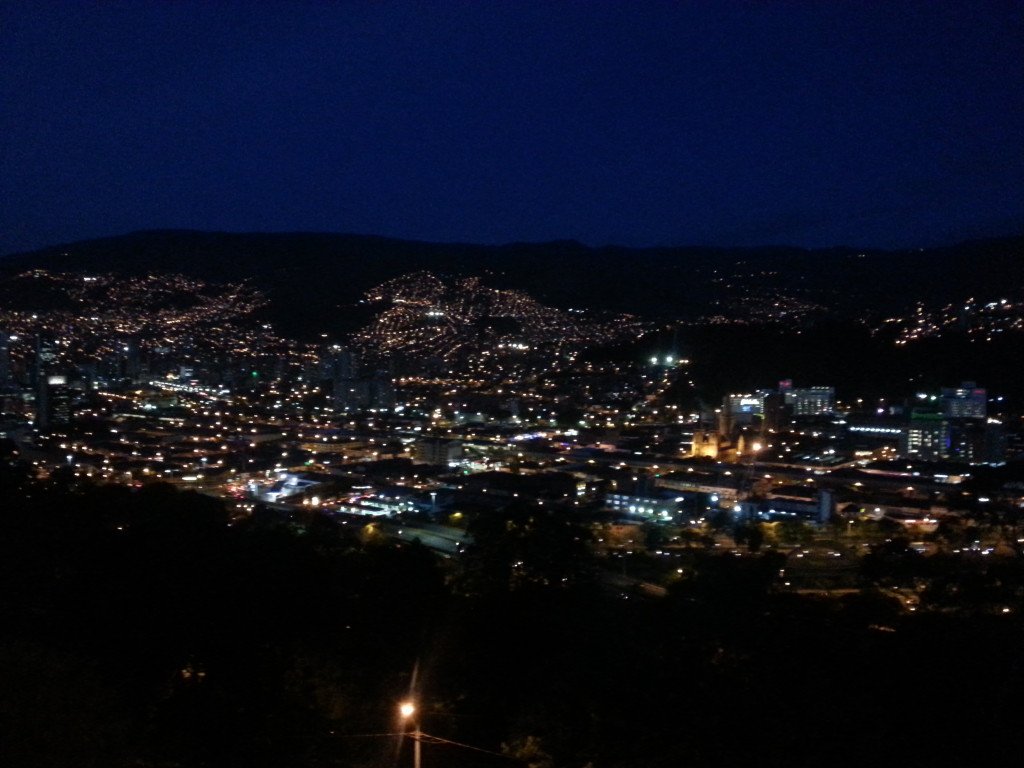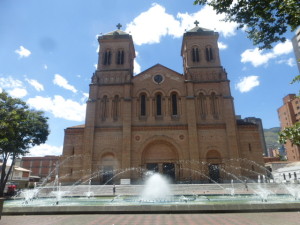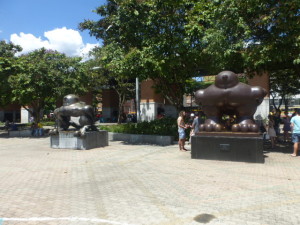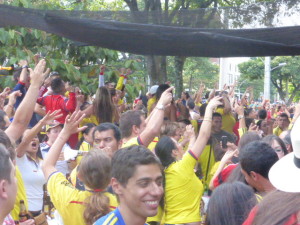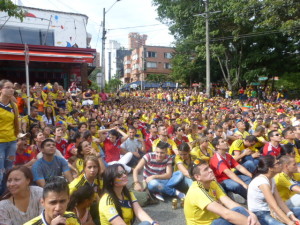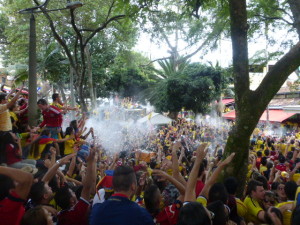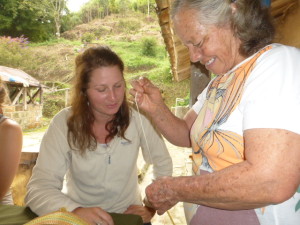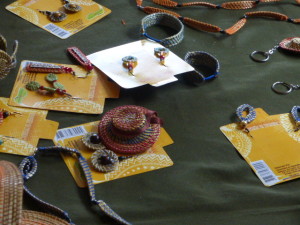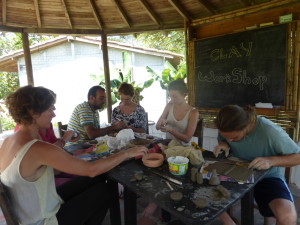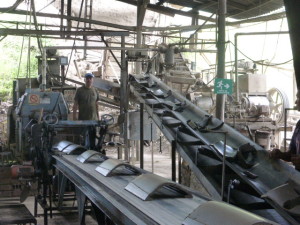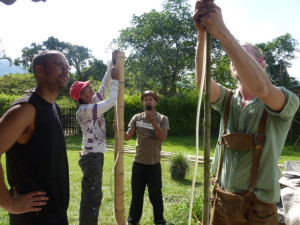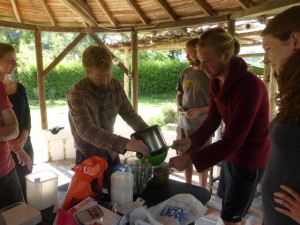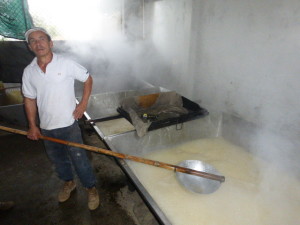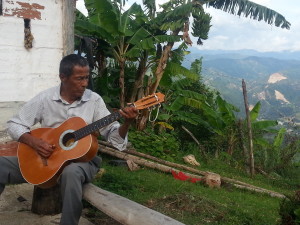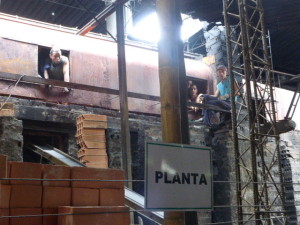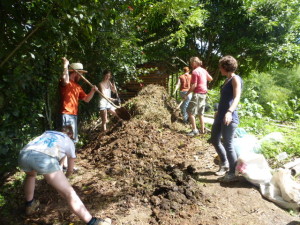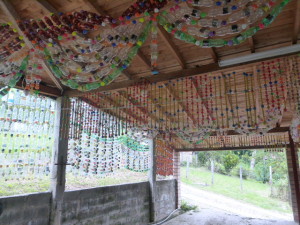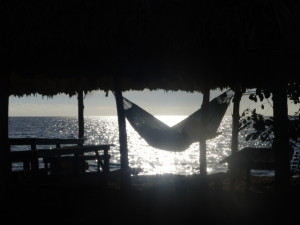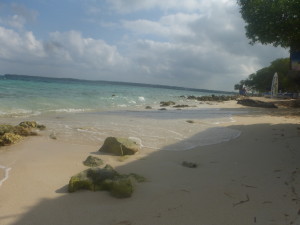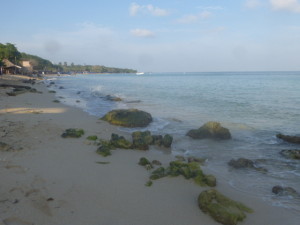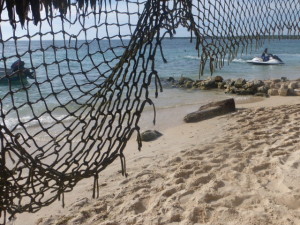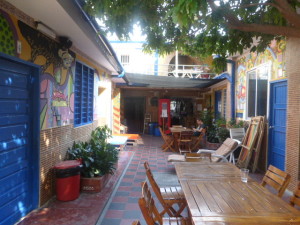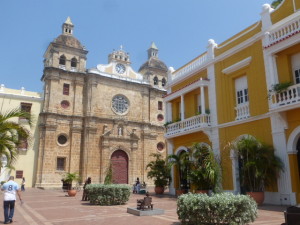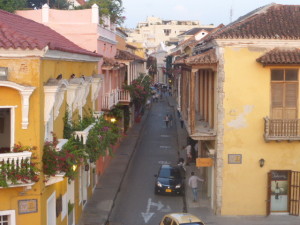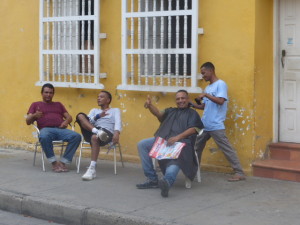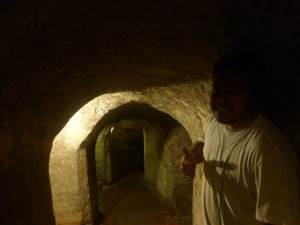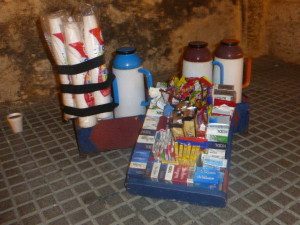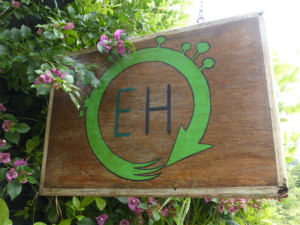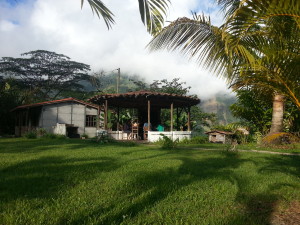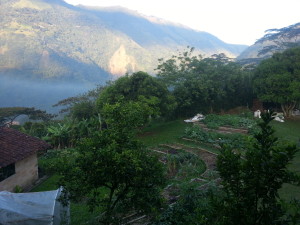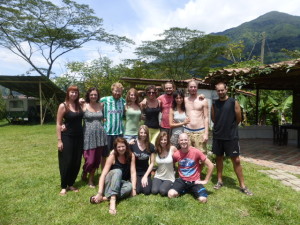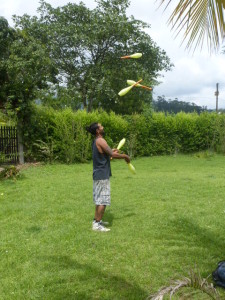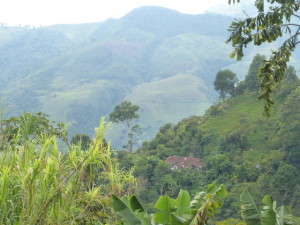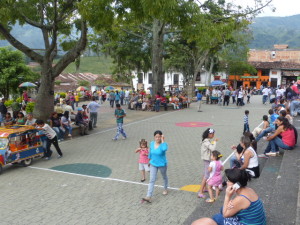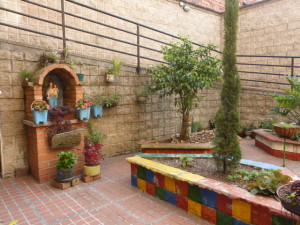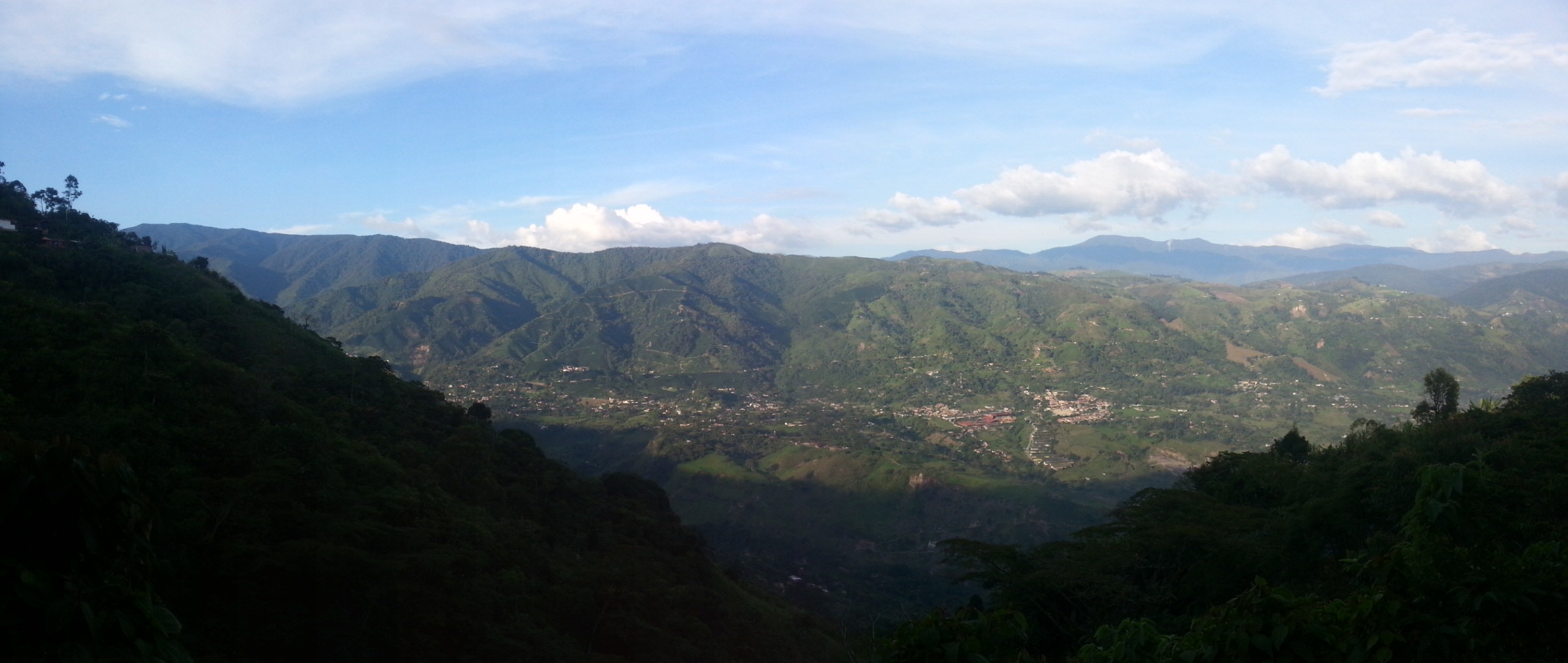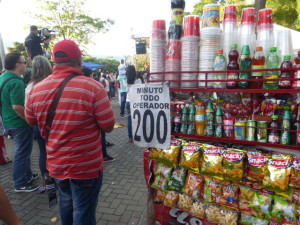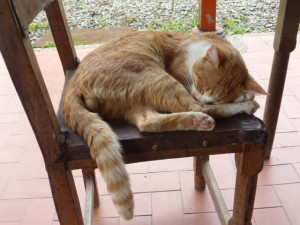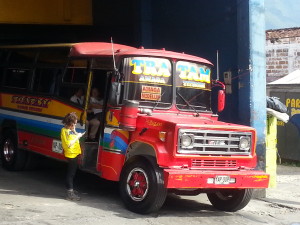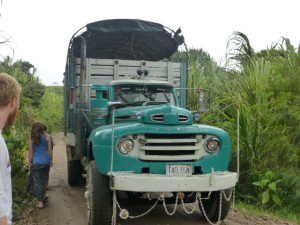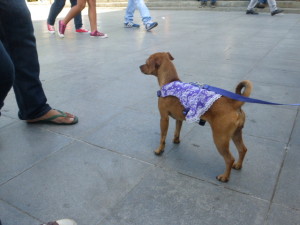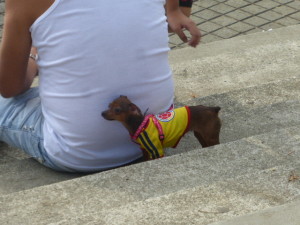
by Jane | Sep 10, 2014 | Colombia, My travels |
I was in and around Medellin for more than three months in the end, so it goes to show that first impressions don’t always count (mad cab driver)
The city is amazing! Similar to many others in Latin America it is situated in a bowl and surrounded by mountains but everything here is in perfect proportion. The ratio of the buildings climbing up the mountainside to the expanse of sky and the greenery, the climate which is rarely too hot or too cold and the people are so inquisitively friendly. Also, there is none of the claustraphobia of La Paz or the immense size of Quito. Medellin is perfect.

Medellin by night
Medellin was, until relatively recently, the most dangerous city on the planet and whilst it still has its dangers and it can be a bit edgy it has changed rapidly.
The government has initialised what is known as democratic architecture – which is when you take the most dangerous places and rebuild them. The hope is that this reclaims the streets from the criminals, giving people a pride and demonstrating that even the poor areas are worthy of investment. Plaza de Luz used to be a no go area, riddled with crime, drugs and guns but now it is a shining example of opening up a space (although it is still not advisable to visit it at night) with its modern library building and its tall light poles which stalk across the square.

Plaza de Luz
As part of this new development the city is now served by the most fabulous transport system. The metro train sweeps above the city on its concrete piers, a modern cable car serves one of the poorest barrios and whisks you up to Parque Avil and the escaleras electricas have made it easier for the residents in Comuna 13 to connect with the rest of the city. Bizarrely perhaps for us to understand, it is the metro system which symbolises the rebirth of the city from its dark days. You will not find one piece of litter or grafitti on it as the population carefully guard this most iconic representation of progress.

One of the gleaming metro bus stations
Cultural events abound in parques, and street art and libraries inform and educate. During my time in Medellin I went along to a samba festival which incorporated hip hop and street dance. The energy generated by the samba bands was over and above anything that I have experienced before with their complete love for the rhythms and dance. I went to a tango event, I saw French gypsy music and I watched Brazilian and Argentinian musicians play. I saw most of these events at the cool Centro Plazarte communal space in the rough-around-the edges district of Prado.

Plaza de Luz at night
There is a entire shopping mall dedicated to geekiness contianing what could be more than two hundred shops selling or repairing mobile phones and computers. I had met G one evening out dancing and when I asked him where I could get my broken laptop fixed he arranged to meet me at the mall and he helped me to negotiate a price and a repair. I believe that the store initially attempted to rip me off by finding a new fault with the computer and charging me nearly four times the original price. After they spotted me taking photographs and learnt that I write for a living they suddenly changed their tune and they couldn’t have been more helpful, keeping my computer for a few days and offering me to lend me one of theirs to take to Cartagena. I tell you this anecdote not to highlight the attempt to scam me but to demonstrate the kindness and generosity of the people. G spent hours with me waiting around, negotiating on my behalf and running me around the city on the back of his motor bike. He had met me once in a night club and simply wanted to help.

One of the fabulous Botero statues
Something which makes me chuckle is the pedestianised street in Medellin complete with traffic lights poking up between the crammed market stalls. This street was stealthiliy and illegally claimed by street traders who set up one, two then twenty stalls and by the time the authorities realised that traffic could no longer pass, they couldn’t be bothered to change anything, shrugged and so the street remains.

el centro
There is also a large square which contains two of Botero’s sculptures of birds. One is a mess having had a bomb explode next to it during the dark days and the other is a new one which was donated by the artist, although he insisted that the city do not remove the damaged one as a reminder of the high number of lives that were lost at that time.

bomb damaged and new by Botero
Like all cities in Colombia prostitutes parade outside one of the main churches, you can buy single cigarettes from traders with their little packed trays and drugs are readily offered as you wander about, but for the most part, everything is conducted under the watchful eye of the ever present police and ususally with a huge smile and good humour
I stayed for the most part in the barrio of Belen in a hostel cum apartment. Rubbing shoulders with backpackers in the dorm, longer stay guests and nomadic workers we shared food and conversations. Travel writers language teachers, musicians and artisans, medical students on a placement, an attorney and a digital marketer all connected and made the place a home from home

outside the liquor shops in La Setenta
I can’t end without mentioning the World Cup. The Colombian team and its supporters won the hearts of the world with their team spirit, salsa dancing and zest for life. I feel extremely priviledged and proud to have been in Colombia during this time when the atmosphere was electric and everybody, including the dogs, wore the gold football shirts
Whilst there was some trouble in some of the big cities on match days and alcohol was subsequently banned it says a lot that Medellin didn’t feel the need to impose such restrictions on its inhabitants.
I watched the Uraquay match in Calle La Setenta where every licor shop, cafe and club had rigged a TV and speaker system outside. The place erupted when Colombia won and the police good naturedly watched while the road was closed to traffic due to the sheer numbers of people celebrating.

waiting patiently in Parque Lleras
The final match against Brazil was AMAZING. A group of us made our way to Parque Lleras in the Poblado district where huge screens had been rigged up among the trees. The place was a sea of yellow with bottles of rum and aguardiente freely passing around. The crowd gradually became a little bit more subdued as it became obvious that Brazil would win and I did wonder what would happen at the final whistle? Anger, fights and trouble? The army and police had a heavy presence and the chances were that things could get ugly.

the final whistle blows and the foam erupts
The final whistle blew and… the place erupted. The Colombians had come out to party and party they would. Proud of their team rather than accusing them for losing they hugged and danced with strangers and celebrated. Music blasted out of houses and bars, drummers drummed and people bought cans of foam and we all had a massive foam fight running around like mad things. The clubs that night were full of gold shirts as the party continued and we stood for nearly half an hour in torrential rain at four in the morning trying to get a cab home.
I adore the city of Medellin.

by Jane | Aug 27, 2014 | Colombia, My travels |
Whilst volunteering at Paola’s Ecohostel Medellin we had the opportunity to take part in some workshops and field trips. Sadly the visit to one of the local coal mines didn’t happen (although I know that Paola was glad – in here words she said – the Ecohostel doesn’t support the exploitation of Mother Earth – but we did do some really cool stuff which you can read about below.
Grass workshop
Lilian, Luz Maria and Luis Fernando live on top of a mountain in the house that their father built. Everything had to be carried up on the back of a mule and even now, when they go shopping they bring goods up on their shoulders. The nearest town is a precise 18 minutes away but as an indication of how steep the mountainside is, it takes 30 minutes to get back. Lilian, Luz Maria and Luis Fernando are all quite a bit over the age of 60 but you would never think so as they are so trim and sprightly and have a zest for life that is not slowed by their age.

concentrating hard
They grow a specific type of grass which, after it is dried and coloured, the ladies sew into jewellery, purses and hats. Paola from the Ecohostel Medellin had arranged for us to visit this lovely family and after trekking for nearly three hours to their home we were treated to a tasty lunch and then we had a bash at making our own jewellery.
Once a month the trio travel to Medellin to sell their unique products at the awesome artisan market – but first they have to carry everything down from their mountain via the local town and setting off at stupid o’clock for the bus.

some of the amazing finished products
Clay Workshop
The clay arrived in a big tub and we were instructed to get down and dirty. The grey gloop had to be worked to the correct consistency and then silence descended over the Ecohostel Medellin as we concentrated. Clay flutes, an aeroplane, beads, salt and pepper pots destined for a display cabinet in the U.S. and even a backgammon board were produced. The finished products were then whisked away to a kiln to be dried out before being returned to us. My flute ended up in the bin as I dropped it while travelling but the backgammon board was very well used over the next few weeks despite the seed counters rolling away every so often.

silence as everybody concentrates
Roof Tile Factory
Like a scene from a Dickens’ novel this small factory produced clay roof tiles. We had often seen the clouds of black smoke from the kilns drifting up through our valley and now we could understand the process. Machinery as old as the hills transformed splodges of clay into tiles which were then piled up into the kilns over the ovens by a team of soot covered men and twice a week fired up. The work is hard and filthy and we would see the men walking back down the lane after their shift with bodies black with coal dust and just the whites of their eyes shining bright. Our own little clay products from our workshop found their way here to be dried out along with the hundreds of roof tiles.

making the roof tiles
Bamboo construction
Paola wanted to construct a roof over the little barbeque area at the EcoHostel Medellin. The wood was harvested from the little jungly area and then the men turned up to build it. Holes were dug and poles sawn, a roof added and voila – it was completed in no time. The one thing that fascinated me about this process was that there is an optimum time to harvest bamboo. It shouldn’t simply be hacked down but the time of the month needs to be considered. If you ever doubt the effects of the moon on our planet try cutting bamboo at the wrong time. The gravity of the moon affects the water in the wooden stems – pulling it up and easing it down in a natural rhythm. Cut when the moon (and tides) are strong and you end up with a wooden pole full of water!

the bamboo workshop
Soap Making
We made our own soap from used cooking oil. Like chemists we mixed and stirred our oil and the necessary acid NAOH sodium hydroxide to ‘cook’ the gloop. Care is needed here as te misture has a potential to explode! Essential oils can be added to make it smell sweet but we added lime juice and teatree oils as we wanted to use our soap for the dishes and laundry. With soap you have to be patient, waiting for a month or so for the chemical process to work but it is a great way to utilise that old cooking oil rather than simply dumping it. One of our volunteers had made soap in the States previously – and she showed us pictures of soap as pretty as cupcakes, whilst our product was more functionable

chemists at work
Visit to the Panela Factory
We set off in a jeep to a small village high in the mountains to the panela factory. Run as a local cooperative, farmers bring their sugar cane here twice weekly for it to be converted to panela which forms the basis for so many things here in Colombia.
Using very basic machinery the canes are stripped and pressed and the juices then boiled until caramelised. Worked by a team in large steel basins the sugary mess is then pummeled into submission and formed into round puddings to harden before being packed.

boiling the panela
A bottle that was bobbing around in the hot tank caused much interest as the worker would periodically swoosh boiling panela over it. What part of the process could a bottle possibly contribute? Umm – the man was simply heating his coffee back up.
Afte buying some panela we were then invited to Raul’s home high on a ridge with THE most spectacular views and he played his guitar for us. Traditional Colombian tunes filled the air with such simply haunting sounds – I know that I shed a few tears as did some of the other volunteers as he softly played and sang for us with the mountains of Antioquia tumbling down behind him.

Raul sings for us
Machete, machete, machete
This was not really a workshop but is a useful lifeskill to have. Why don’t we have machetes in the UK? Well balanced, they slice through most things with complete ease. Hacking down thick bamboo poles, chopping through the undergrowth or digging up weeds – these tools are amazing and I want my own. I am sure that adding machete handling to my CV will make future employers stand up and beg for me to work for them.

hot filthy work in the kilns
Bocachi
This is a Japanese inspired way of making a quick soil from crap. Yep – we were off into the fields opposite the finca with our shovels and collecting cow shit. These cows are free range eating the finest grass but they produce the sloppiest poos. By the end of our sessions we were plastered in the stuff!. Leaves, yeast malt and other stuff go into the pile which is then mixed and covered with a tarp. It heats up – and I mean it REALLY heats up and is turned twice daily. Within about ten days there is sweet smelling compost ready to spread onto the newly constructed terraces and it can be planted up. The climate in this part of the world is perfect for cultivating things and within four weeks we had tomatoes ripening in the new beds.

mixing the bocachi
Poker
I learnt to play poker. I loved this game. Buying a handful of beans, seeds and bamboo chips we gambled a couple of evenings away. Considering I had never played before I didn’t disgrace myself (although I didn’t win). We were serious but fun, sat in one of the tiny mountainside bars that litter Latin America drinking beer and eating lemon flavoured crisps.

local bar (poker den) ingeniously decorated with bottles
Bars here are set up on any piece of ground, often contain a pool table or french billiards (like snooker or pool but you play with just three balls and no pockets!!!) and are decorated in the most ingenious of ways with very little expense. Children usually play around, dogs pant and sprawl and music pumps out at full volume around the clock.
The above should give you a taster of the things that I got up to in my five weeks with Paola and the gang. In fact, I loved Amagá and the area so much that after my initial five weeks were up I moved in with a local family for four weeks and then I drifted back to the hostel for another two weeks

by Jane | Aug 20, 2014 | South America |
Chips of coral looking for all the world like bleached bones litter the creamy white sand. Powdery as chalk dust, the beach stretches along into the horizon flanked on the one side with the translucent sea green Caribbean sea, the other lost in a muddle of straw topped cabanas and hammocks.

my bed for the night
The launches that were packed with day trippers finally left the beach at three in the afternoon leaving Playa Blanca and the Isla Barύ to those who were staying overnight. I had arrived in Cartagena two days previously and I had decided to treat myself to a bit of R & R as a treat for all of my hard work leading up to the re-launch of my website.

Playa Blanca after the day trippers have left
Now, I am sat with pen and paper at a small table in the dark looking out to sea at one of the time little ‘hostels’ that line the beach. The warm ocean gently laps around my toes á la Shirley Valentine and the sky is lit up with a thousand stars. Reggae music drifts along the beach and candles stuck into plastic bottles cast a soft orange glow across the small groups of people who are sat chatting quietly over their evening meals of extremely freshly caught fish.

early morning at Playa Blanca
I don’t like boats and I hate small boats with a vengeance so when I found out that my hostel in Cartagena, the Mamallena was offering a shuttle bus transfer to this idyllic beach I jumped at the chance to give it a go.
Instead of a small boat across the open water which apparently can become quite choppy in the afternoons I was picked up outside my hostel in an air-conditioned minibus and myself and the eleven other passengers were whizzed along the smooth road which connects Playa Blanca to Cartagena in less than an hour.
The bus costs 35,000 Pesos (50,000 return) and unlike the boat it goes directly to the beach and it also means that you don’t have to pay the additional landing tax. The return element is valid for more than the one day too which is a good deal compared to the boats. The boats land on the beach, the shuttle bus stops at the back of the beach. You just need to walk down a short flight of rocky sandy steps and you are there, although I would suggest, just like Stuart at the Mamallena suggested, that you immediately turn to your right and walk ten minutes to the softer sand, rock free sea and less beach touts.

the perfect beach
As you walk along the beach it gets quieter but to be honest nowhere is really noisy or busy apart from the very first bit immediately in front of the little stallholders. Food and drink is a bit pricier as the fish is fresh and landed that day or other food has to be transported in, but it was not as hefty as I had expected. And my piece of fish was beautifully cooked over an open wood fire at the back of the hostel.
After two days and a night swaying sleepily in one of the hammocks for just 10,000 pesos (£3) I really didn’t want to leave Playa Blanca but I dragged myself away from the beach and took the shuttle bus back to the Mamallena hostel.
On my return I had been allocated to another dorm which was lighter and more spacious than my first room but noisier in the night. I sleep badly anyway so it didn’t matter to me. The hostel does all that it can to minimise noise within the building and it is very quiet inside the courtyard at night. It is not a party hostel but it is situated in party street but it is so very friendly. I met several people who relocated to it from other, less friendly hostels in Cartagena.

the shady courtyard at Mamallena hostel
The rooms are clustered around a long narrow central courtyard shaded by trees and have colourful artwork on the walls but best of all, the dorms and the private rooms have air con. Believe me, you will need it here at night. The hostel has a resident dog and a couple of cats and while in the heat they mostly lazed around, the star of the show has to be the parrot Tori. A green parrot just one year old she entertains all the guests with her antics and her singing and her non stop chatter, while she demands attention and hops around in the trees in the courtyard.
Stuart from Tasmania owns the hostel and with a nice bar, decent food, a pancake breakfast included and the mellow atmosphere the Mamallena is a great place from which to explore Cartagena. Situated just a couple of blocks from the walled city in the Getsamane district, the streets outside offer nightlife and day life in the form of clubs, bars, restaurants and people watching.

Cartagena swelters in the heat
Medellin had been hot and sunny but Cartagena takes things a steamy stage further. I can honestly say that the only other place that I have been which is just as hot and humid so far has been India during the monsoon season and the sea at Playa Blanca has been the warmest sea that I have ever been in – and also one of the clearest.
So, what about Cartagena?
Well, Romancing the Stone was not filmed here. I haven’t seen any crocodiles but the old walled city is stunning. It oozes colonial architecture with its balconies and courtyards, flowers tumble from terraces and there is colour everywhere. The old walls guard the city and are incredibly well preserved and dotted with tiny cafes, restaurants and gift shops. Did I say that it is hot? I picked up a ‘free for tips’ city tour (more about that in another post) and I went into the ice cold interior of one of the emerald shops. I had no intention of buying but the jewellery was stunning and made of stones sourced in Colombia and I listened attentively while the assistant brought out many more plates of expensive jewels until my core temperature had dropped to a more manageable level. I popped in and out of the cathedral and some of the churches and I thought about going into the Naval Museum and the Inquisition Museum, but I will save them for another visit.

within the city walls
I escaped from the heat and I lunched in a really cute little restaurant called El Balcon which was situated in the old town and one evening I joined the crowds and I went up onto the walls looking out to sea for the sunset, rubbing shoulders with people who were paying 10 mil for a bottle of beer while I paid a little man with a cool box just 2 mil for a can of beer. We watched the same sunset but my experience was 8 mil cheaper.

its too hot to cut hair indoors
I ate out with Mor (from Israel) and Tina (from the Philipines) at a little Mexican restaurant around the corner from our hostel and I joined hordes of other travellers, backpackers and locals one evening in Parque Trinidad. This square is jam packed at night with the travellers who are not searching out the loud clubs but want to sit and chill, drum or strum guitars gently and juggle. Served well by the men with their cool boxes, the men with their flasks of extremely decent coffee for about 18p and snack sellers this is the place to be, although I did spend a sweaty evening watching a great salsa band in Club Havana

lost in the tunnels underneath the castle
I joined forces with Carlos another guest at the hostel (and who owns his own hostel in Brazil) and we walked up to the fort which is just a fifteen minute walk from the Mamallena. I didn’t know that Cartagena had a castle let alone such a big one. It was a bit pricey to get in (17,000 pesos/£5.30) but for an extra 10,000 pesos we shared one of the little audio tour handset things and joined together by the umbilical cord of the headphones we wandered around. We were in there for over two hours, climbing staircases, peering over walls and getting just a little bit lost in the underground tunnel system.

street coffee, Cartagena style
As a sideline to the Mamallena hostel Stuart has Mamallena Tours and Travel through which you can book trips to the mud volcanos, buses to Santa Marta or Tayrona, boats to Panama and you can also book a trek to the Lost City. I am still weighing up the pros and cons of doing that four or five day trek so watch this site to find out if I eventually went for it, but also check out the link to see what else is on offer from this company.
And then one evening, Lio visited out hostel with some mates. We had already met whilst staying at a hostel in Medellin and we decided that as we both planned to go on to Santa Marta next we would meet up and travel together a couple of days l
Note:- Whilst I received a complimentary Shuttle Bus transfer to Playa Blanca from the Mamallena Hostel this did not influence my opinion or review in any way. I have portrayed an honest picture of my stay

by Jane | Aug 12, 2014 | Colombia, My travels |
So, after an initial few days spent settling into Medellin I jumped on a local bus on a Sunday lunchtime and I headed off to the little mountain town called Amagá which is just 45 minutes south of the city. After being deposited in the bustling central parque an entire family helped me to locate one of the Willy’s jeeps which would take me up the rough track to the hostel.
And there I fell into another little slice of paradise. I struck gold with the location of the hostel, the owner, the other volunteers and all of the residents in the town of Amagá.

Ecohostel Medellin
The EcoHostel Medellin is fast establishing itself as a permaculture farm and guests here have various options. My week (and that of most of my fellow volunteers) went something like this:
On a good day I would get out of bed just as the mountains were turning a blue grey as the dawn broke and the soft mist would saunter up from the valley below. I would often attempt to meditate or I would join in a yoga session. Breakfast would be at 6.30 and then me and Nat (and later Mat) would head off up the tiny path up the massive hill to the little one-room primary school where we would endeavor to deliver an English lesson to up to eighteen adorable children. I take my hat off to their full time teacher who taught on four separate blackboards to an age range of between five and twelve year olds, all at the same time. She had the patience of a saint and a smile to go with it.

Spanish lessons in the outdoor classroom
After the English class we would have an hour and a half of Spanish classes with Paola in the most perfect outdoor classroom. It is tough trying to conjugate those bloody Spanish verbs but it was made far more bearable with the backdrop of the mountains rearing up over us, the vultures circling above us and the insects and birds squawking and chirruping away.
I also worked on the farm for two hours a day – and we usually managed to fit all of this in before a wonderful hearty healthy vegetarian lunch. The farm work varied hugely but could be anything and included planting and weeding, collecting cow poo from the field opposite, collecting leaves down in the jungly bamboo forest, clearing new paths with machetes, digging terraces and making Japanese bocachi (a quick compost).

one of the vegetable plots
Some of the volunteers would head off to teach English to the secondary school children in the afternoon, but having done my bit at the primary school in the morning I would either hang around in a hammock and recharge my batteries or I would head off in the other direction into the town. We would also take it in turns to attend an intercambio group consisting of adults and children in Amagá and which usually ended in a beer or two once the little ones had left.
Paola also organised various field trips and experiences for us all. I will tell you about these trips in a future entry but they included a visit to a panela factory, soap and clay workshops and a trip to the local roof tile factory.

our volunteer family
Permaculture is as old as the hills but seems to have got forgotten along the way as human beings have ‘progressed’. More and more people around the world are turning to this method of farming which involves working with the land, geography, climate and the natural resources. Water is used wisely, waste composted and the food is organic. It is a complete way of life and if you want to know more you should visit Paola’s place and do a stint here.
Although every batch of guests going through Paola’s place are great, I know that I was with the very best of the bunch. We were an unusually large group as some volunteers had just turned up to check out the place and ended up staying. Some lunchtimes there were sixteen of us around the large dinner table – the guests, Paola and her novio, Tia (aunt) and Mauri our juggling, acrobatic, samba drumming gardener.

our juggling gardener
We, the volunteers were a diverse bunch but we had the best of times. As well as the yoga and the meditation I had a massage from my Texan friend in the little outdoor schoolroom during the most spectacular thunderstorm, reiki and crystal healing from LL and I have it on good authority that a baby may even be named after me!
I had a magical twenty minutes in our darkened dorm room with my Swedish pal – no.. wait.. where we were totally mesmorised by a firefly which had somehow got in and which treated us to a Disney-type neon green dance as it floated and flashed around our heads whilst we oohed and aahed. Tinkerbell has to have been modelled on this phenomenen of nature and then on other evenings we would spend ages up on the high bamboo platform as dusk fell, watching the magical sparkles as the glittering bugs floated and swooped and danced in the trees and bushes, made all the more magical by their silence and the intensity of their green, orange and white lights.

the mountains go on for ever
With no internet, TV or radio at the hostel we would head into town to connect with the outside world. Often, walking along the track we would overtake horses or cows which were grazing along the grass verges, clamber up the ridiculously steep roads to the market and, past the outdoor area where you would see women doing the laundry, lads washing their motorbikes off and miners black with coal dust showering under the freshwater spring where the water gushed freely out of the mountainside. And there were of course many many times when a passing motorbike would stop and with no helmet I would jump on the back, or one of the Willy jeeps would stop, fully laden but would allow us to hang off the back ladder for free.
Many of the houses in Amagá have no running water and residents use the outdoor spring to collect drinking water, shower and laundry. It was always a bit disconcerting walking back from the town after dark and bumping into a silent cow or horse, but the show of stars above and the many glittering lights from the hundreds of houses scattered among the mountainside plantations gave the whole place a cosy feel.
The town has no museum or attraction to visit and there is no reason to stop there as it sprawls up the mountainside – BUT this is what makes it such a magical place and the EcoHostel Medellin perfect for a weekend stop or a more extensive break. Apart from the guests at the hostel you will be hard-pressed to find anyone from outside Colombia in Amagá and therein lies its secret, and of course it is just an hours bus ride away from the magnificent metropolis that is Medellin.

Amaga on a Sunday afternoon
The people here have to be the friendliest, most inquisitive, most generous people in the whole wide world. Whether you are sitting in the market trying to skype home, having a drink in one of the hundreds of little street side bars or shopping, people will come and talk to you. Men, women and children are inquisitive and so proud that you are in their town. They want to practice their English, invite you into their homes for dinner or pay for your beers or coffee. And always they have the widest smiles and the happiest manners.
And I can’t omit to mention the little town library. It is a little hub of activity and with the cutest little courtyard which is lovingly tended by Julio the great librarian, this has to be the prettiest library in the world.

the little library courtyard
After initially planning to stay for just five weeks I extended my visa and I remained in and around Amagá and Medellin for twelve which will give you some indication of how I fell head over heels in love with this place. I need to move on so next is Cartagena and the Caribbean coast. I need to move on so that I know if I want to return.
I could write forever about Amagá and the region of Antioquia, but I will try not to bore you. This area and its people wove a magic around me. Here I eventually found an inner peace and I am moving towards an acceptance of things that I am unable to change.

by Jane | Jul 26, 2014 | Colombia, Funky Facts, My travels |
Colombia is Colombia! But it’s Colombia!
Both of the above expressions can be heard over and over again, usually accompanied by a nonchalant shrug of one shoulder and a wry smile, and used to excuse or explain away just about anything that needs an excuse or an explanation.
Poor timekeeping, bad driving, any quirk of life that occurs – all are explained away with good humour and an unlimited amount of patience.
The following are not all restricted to Colombia but here they are certainly delivered with a lot of charm and the widest of smiles.
1. The Minute Man (or woman). This is minute as in time rather than teeny tiny people. On every street corner you can find somebody holding up a cracked laminated sign or they have a cardboard notice pronouncing ‘minutos’. Don’t have a cell phone? No problem. Simply use a mobile here and pay for the respective minutes that you have used – and they are cheap. More often than not the phone is tied by a length of string to the other person so you can’t run off with it, but it is the perfect system for people who don’t want to or can’t afford to buy their own mobile. It is also indespensible for travellers who like me still haven’t bothered to purchase a Colombian sim card or for safety reasons would rather not be out and about with a phone.

man on phone – you can just see the string
2. Poor timekeeping: the longer that I spend in Latin America I have come to realise that poor time keeping is not down to rudeness or insensitivity but it is just the attitude of a nation of people who generally live life more slowly and in the moment. This is forced on them to some extent by the bureaucracy and the craziness of the rules (when any rules do exist), the transport systems, the heat and an overall laissaz faire outlook on life. Colombians enjoy the moment. They will not pass a friend in the street without a good gossip and they will stop to pass the time of day with strangers – and if that makes them late for an appointment – well the chances are that if they are meeting with another Colombian then they will have done the same and they will probably both turn up at the same time anyway. So therefore there is no problem.

all the time in the world
3. Bus travel has been described to me by more than one Colombian as an extreme sport. Drivers are recruited on their fearlessness and their ability to keep the accelerator pressed flat to the floor, even when collecting or depositing passengers. Mothers with babies in their arms, twenty school children, crinkly old ladies with a sack of beans over their shoulder or men with boxes of chickens – the bus stops for no one. If you are very lucky there will be a conductor on board who will leap off and give you a not so gentle shove up the arse or take the chickens off you so that you have two hands free, and then the bus will lurch forward again, rolling all the newbies along the aisle. No need to shout ‘move along please’ – the g-force compacts everybody towards the back with little effort, with the already seated passengers holding up willing arms to catch the babies or the beans.

one of the better local buses
4. If bus travel is an extreme sport, then the roads are the adventure playground. Is that a solid double line down the centre? Does it indicate a hazard such as a blind bend or a dangerous corner? Yes, it does, but it is not a warning sign – rather a challenge. Look – a blind bend with a two thousand metre drop down a sheer mountain side – yep – overtake. Even better if you are a bus driver and you can try to overtake a line of long lumbering lorries – on a blind corner – in the mountains – and on the busiest road in the region – it makes the challenge longer and it certainly gets the heart pumping. Bridges under repair with no side safety barriers or carriageways which have been undermined by landslides – those maximum speed signs need to be doubled and then have a zero added to them for that added zing to life.

one of the oh so slow lorries
5. Michelada – This is a beer with attitude. The Colombians drink their beer with additives. Take a beer but first coat the rim of the glass with a hefty amount of lemon juice and salt. Then put a good inch of lemon juice in the glass and more salt before pouring in the beer. This is the standard although I have had a michelada which also contains pepper and chilli – and once one arrived with Worcestershire sauce in it! It’s almost a meal.
6. Arepas are EVERYWHERE and people can’t get enough of them. They are a staple food and probably more important than bread here. They are a sort of thick tortilla made from maize which you can eat cold but are better heated up over the gas flame on a little hot plate. Unfortunately they are served up with every meal – bread, lunch and dinner and I HATE them. I can’t quite put my finger on why I don’t like them as they are so bland and inoffensive but there is something of a vague off-putting smell about them. They come in various flavours but they are all horrible as far as I am concerned – on a par with papaya and sopa de mondongo – diced tripe soup (cow’s stomach). I give them away to people at the next table.
7. The mullet hair style is proudly sported all around the country. Gelled and spiked and a reminder of the eighties men are generally exceedingly well groomed and take amazing time and care over their hair and their clothes. I reckon Latin America has more hairdressers and barbers per head (did you get that pun?) of population than on any other continent. Shaved sides, little mohican stripes and rats tails are combed, groomed and preened in any available shiny surface. I have also spotted a large percentage of the men wearing clear varnish on their fingernails and most take an incredible pride in their physique and appearance. I like this trend.
8. Dogs are dressed up. Dogs wear clothe;, coats, scarves, hair ribbons and slides, booties and dresses. They even have football strips for dogs and like the men, they have a passion for nail varnish – well, to be honest, probably the dogs couldn’t care less but their owners do. In a place where the temperature is melting hot it strikes me as odd to add more layers to an already furry creature – although if they sold strait jackets for dogs I would buy one for the dog which tried to attack me the other week and bit the leg of my shorts.

doggie in a dress
9. Men wearing nail varnish and dogs wearing dresses are all perfectly understandable when you realise that the national obsession is looking good. This is historic and goes back to when the drug barons were the celebrities and dressed to kill (another pun there!). Now, not a man, women child or dog goes out without checking themselves in the mirror three times, full makeup is applied and clothes are always spotless and pressed stiffly to attention. Colombians nearly all sport tooth braces for that amazing smile and many women go under the knife and have cosmetic surgery. Many procedures are available in the poorer areas for free but for those who can’t afford to or would rather not add bits on to their bodies (yes they add on, they never deduct) then you can buy uplifting knickers and jeans with butt enhancing pads built into them.

doggie in a football strip
10. We were travelling in a cab late one night in Medellin when the cabbie blatantly ignored several red lights. Wondering aloud if we would actually make it to our destination in one piece or if we would be taken out by another cab doing the same, our driver explained that in Medellin it is actually legal, or at least tolerated for cars to jump red lights after ten o’clock at night. He explained that no driver wanted to sit around at a junction and run the risk of being robbed or shot and the police have enough to do without mopping up the pieces. So we decided that yes, we would rather take our chances at the junctions in the gapme of ‘Traffic Light Russian Roulette’ than that well known arcade game of ‘Shooting Sitting Ducks’.
by Jane | Jun 29, 2014 | Colombia, My travels |

The fantastic cable car system in Medellin
‘I am sad and shocked’. M put into words what I had been thinking as our tourist bus negotiated its way through the city centre traffic in Medellin. M only had a few days in Medellin before flying home so we had opted to go on one of those big red tourist buses and get a good overview of the city. We had seen some beautiful places and parks but we were now driving along underneath the metro line in the Prado barrio. Our hostel receptionist had marked this on our map with a big red cross for danger and we now knew why. The long central reservation which was straddled by the brightly painted concrete legs of the overpass that held up the railway lines and which ran alongside our road was not peopled by jugglers, families or fruit sellers like in other places. In the cold light of day, or rather in the midday sunlight and sitting, standing or lying in full view were men and women either taking drugs or lying comatose from the effects of them.

sleeping it off in the park
A young woman who may have been seventeen or twenty seven with dirty blond hair stared at us with blank eyes as she deeply inhaled from a paper bag. Watching her as she sat alone and cross legged on the paving slabs I could only think with a deep sadness that she was somebody’s daughter or sister or friend. Just a little bit further along a man was heating up and inhaling something from a tin foil wrap and then we spotted countless other men and women doing the same.

flopped down between benches – nobody else bats an eyelid
It was sad and unsettling and in a country where massive numbers of people are dressed in rags and sleep on pavements or in parks, wash and clean their teeth in fountains and rivers or huddle barefoot under tarpaulins when it rains, it was a reality check. Colombia is one of the richest countries in South America yet it appears to have more social problems, crime and danger than many of the poorer ones, ot at least, the worst of them are on public show.
Our arrival in Medellin a couple of days earlier hadn’t boded too well either. Despite meeting a lady on the bus who offered to negotiate with a cabbie at the station with us and would ensure that he would get us to our hostel safe, it went a bit wrong.

Drug dealing and drug taking under the bridge

sleeping it off in the midday sun
The gross man who had promised that he knew exactly where we were to go promptly stated that he was lost once we had left the lady behind and he drove round and round, whilst also getting cross with me because I had accidentally slammed the door a bit hard. He had originally tried to tell us that we should travel with him with our rucksacks in his OPEN boot because they wouldn’t fit (I wish that I had listened to my instincts and not got in the cab) and then he eventually stopped outside what was obviously not our hotel despite having the name and the address on a piece of paper which he kept referring to. The hotel had the wrong name, was in the wrong street and in totally the wrong area. By now me and M were both very uneasy and M suggested we get out anyway and regroup from within the hotel as the staff had come out to meet us and take our bags. The cabbie then tried to double our bill and I saw red! I stuffed less than we had originally agreed into his hand and told the hotelier that he was a bad man and that we needed to get inside safe! In Spanish! So he heard this and lolloped around the cab at me, obviously threatening me. There was then a little bit of chaos whilst we tried to drag our bags inside and shouted at him and then the staff came to our rescue and locked him out!
Phew! My heart sank as after Cali I had really hoped that I would like Medellin.
But the staff at the Prince Plaza Hotel were fantastic. In the first instance they offered us a room and whilst not overly expensive it was a bit out of our budget since we had booked into a dorm in a backpackers hostel. But the staff were great and didn’t turf us out onto the street. They continued to help us, offering us coffee and water, checking the directions for the correct hostel on the internet for us and they even phoned them to confirm that we had reservations and then got us a guaranteed safe cab to take us there. They were so nice and reassuring and I am sorry that we didn’t stay, but what was really incredible was that this was all on Beatriz’s first day working for the hotel. This all happened a couple of months ago so she may not even remember us that night but I really hope that she is still working at the hotel and that she is enjoying her job. Customer service in Latin America is rather different to what we accept as the norm in the UK but this lady certainly pulled out all the stops to help.

houses cling on to the mountainside – view from the cable car
So here we were, after a not too auspicious introduction to Medellin, looking with dismay at the sadder side of life. The previous day we had ridden the cable cars to the enormous park at the top of city and twice we had been turned back from our preferred route by security and warned that we were at risk of kidnap if we continued to hike up there!
As I have already said, M was due to head off to Bogota the following day and fly home and I had arranged to stay and volunteer at a hostel an hour outside the city. I decided that I would honour that commitment but if the region didn’t grow on me soon I would cut my losses and bid farewell to Colombia and head south for Ecuador.
Sign up to receive future blog entries and discover what happened at the EcoHostel and find out what I got up to in Antioquia and what I thought of Medellin. (Here’s a hint – later this week I am going to tackle the immigration office and see if I can extend my tourist visa!)
Note: I have blurred the faces of the people who I have portrayed. They are all somebody’s daughter or son and I would not want them to be identified

